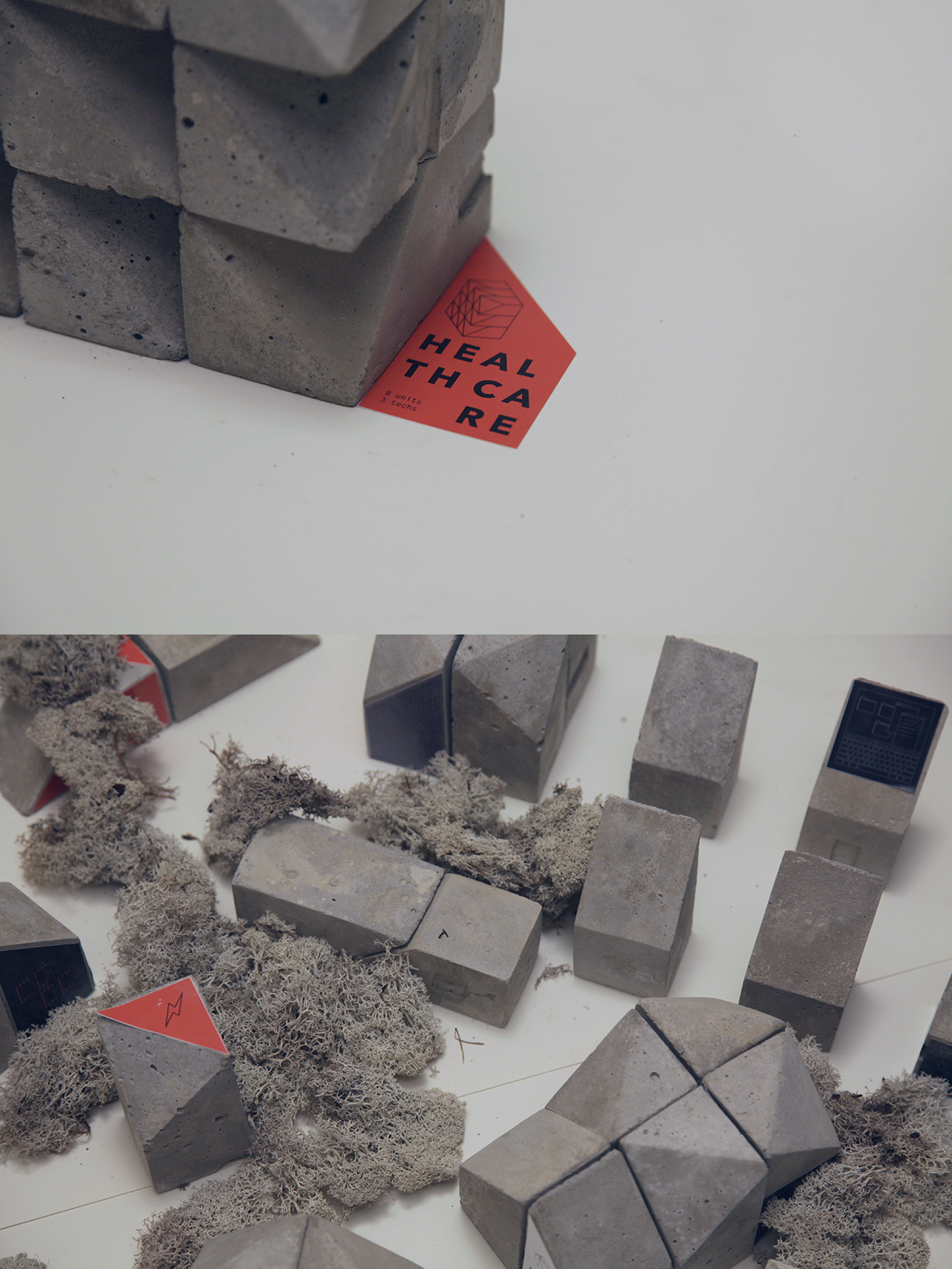A participative installation for the event 'The Sooner Now' combining the mechanics of role-play, board games and rapid prototyping. CCCC.CITY (aka "Four Seas" / "Foresee City") looks at future cities through a technosocial lens.
During the course of the one-day event, about two hundred visitors of all ages and backgrounds were invited to take part in building and inhabiting a future city under the ominous supervision of AVA’s Chief Spiritual Advisor’s representatives.
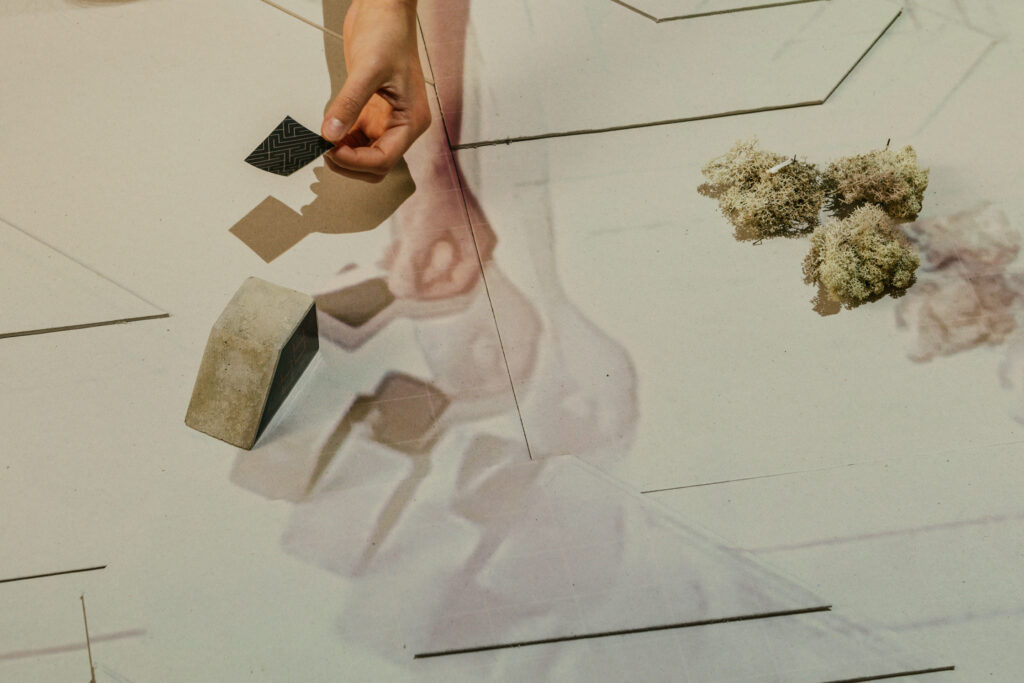
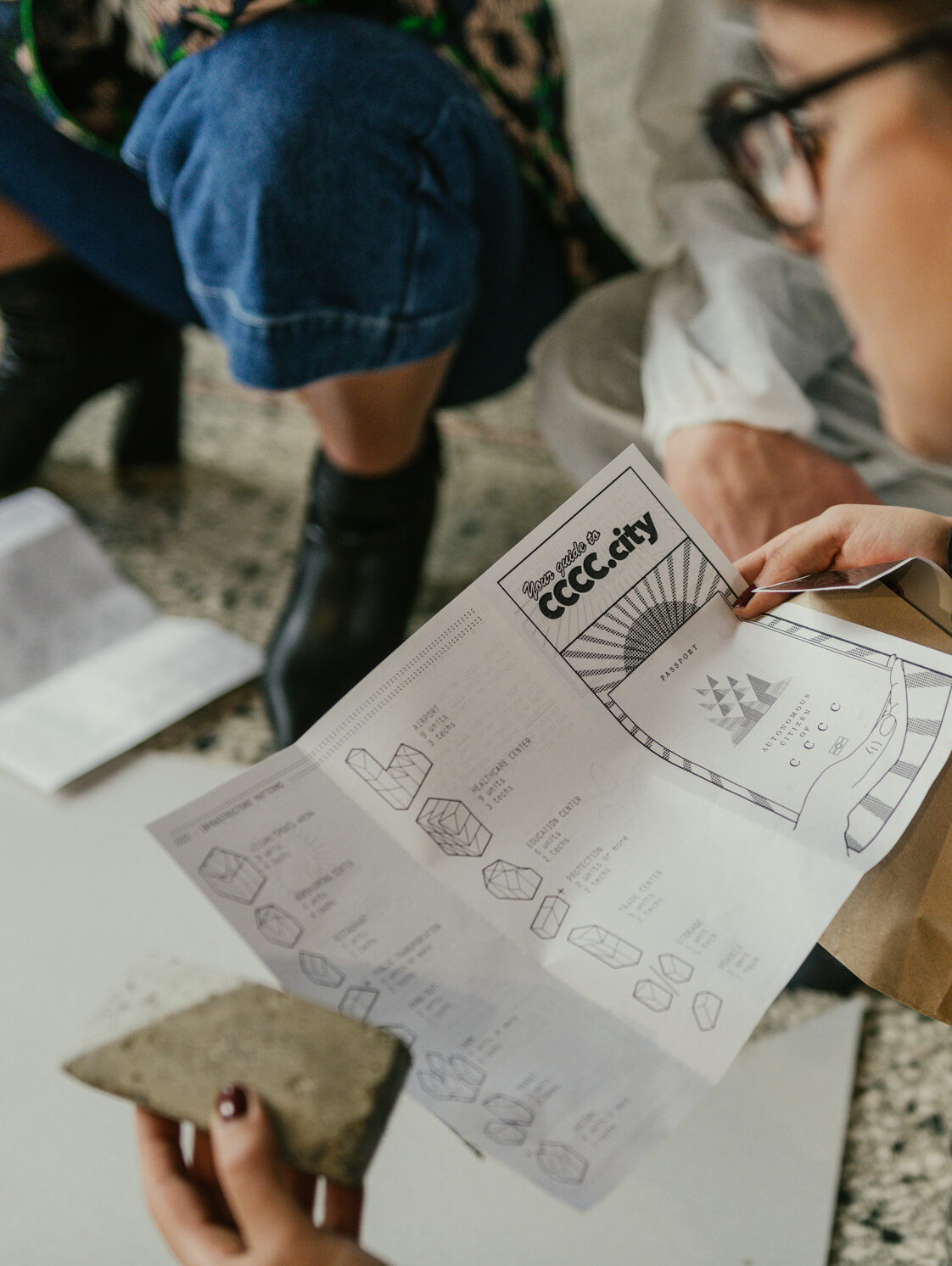
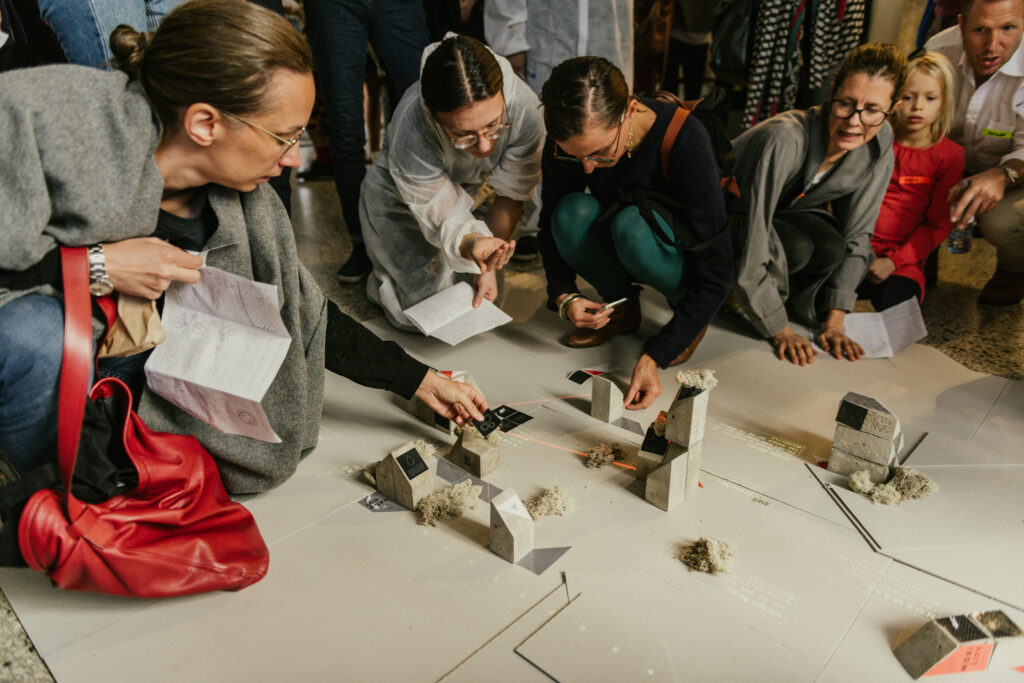
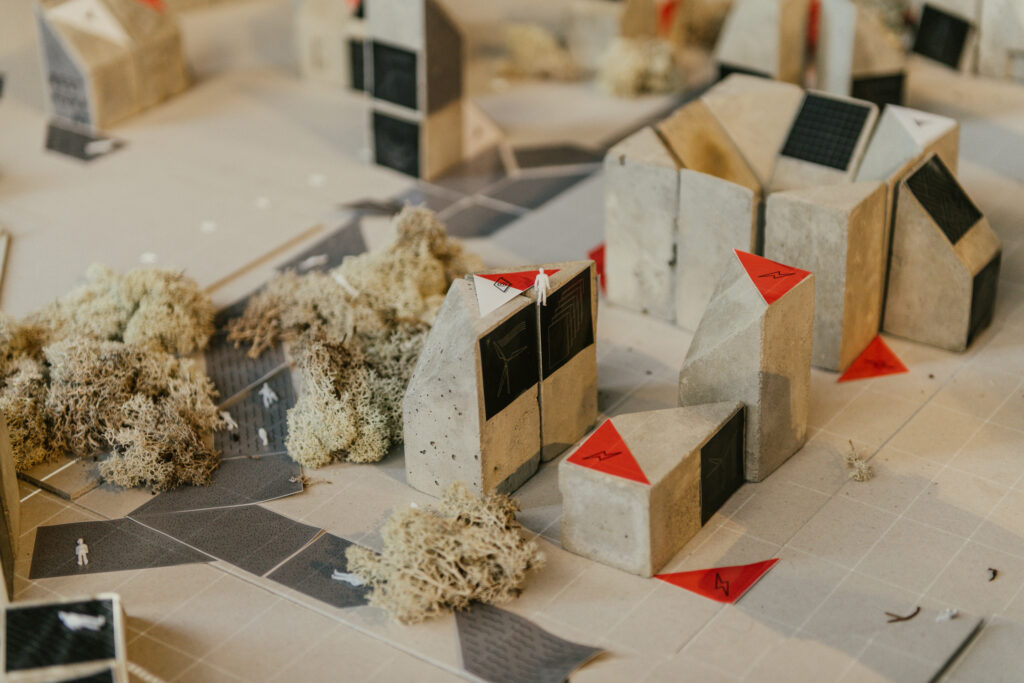
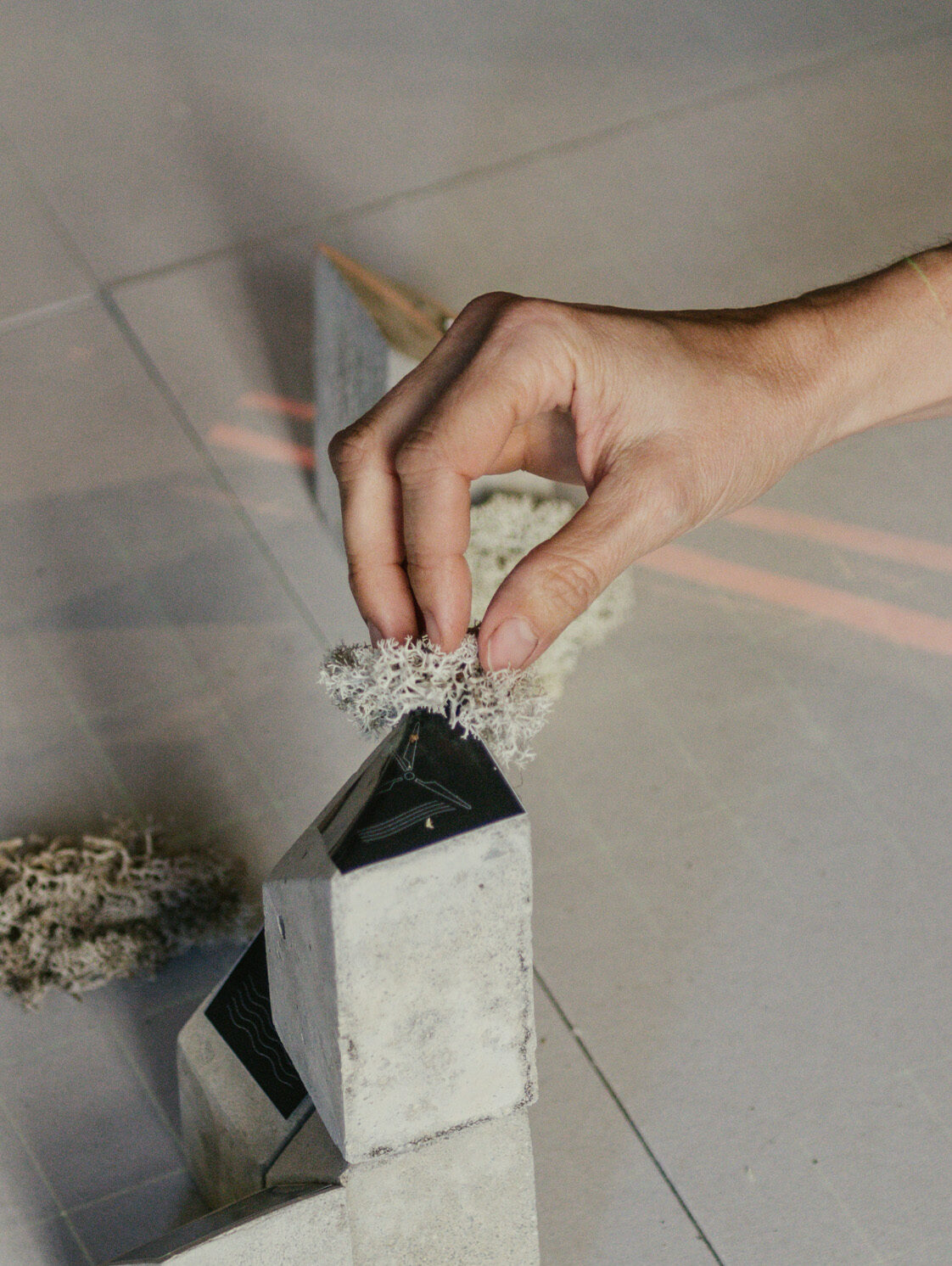
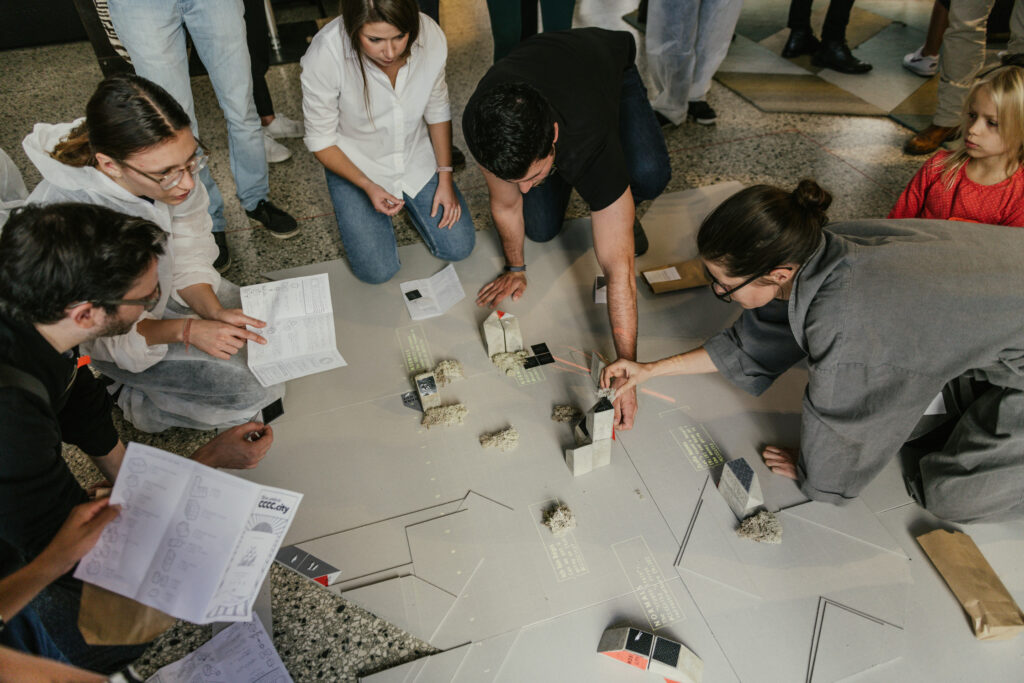
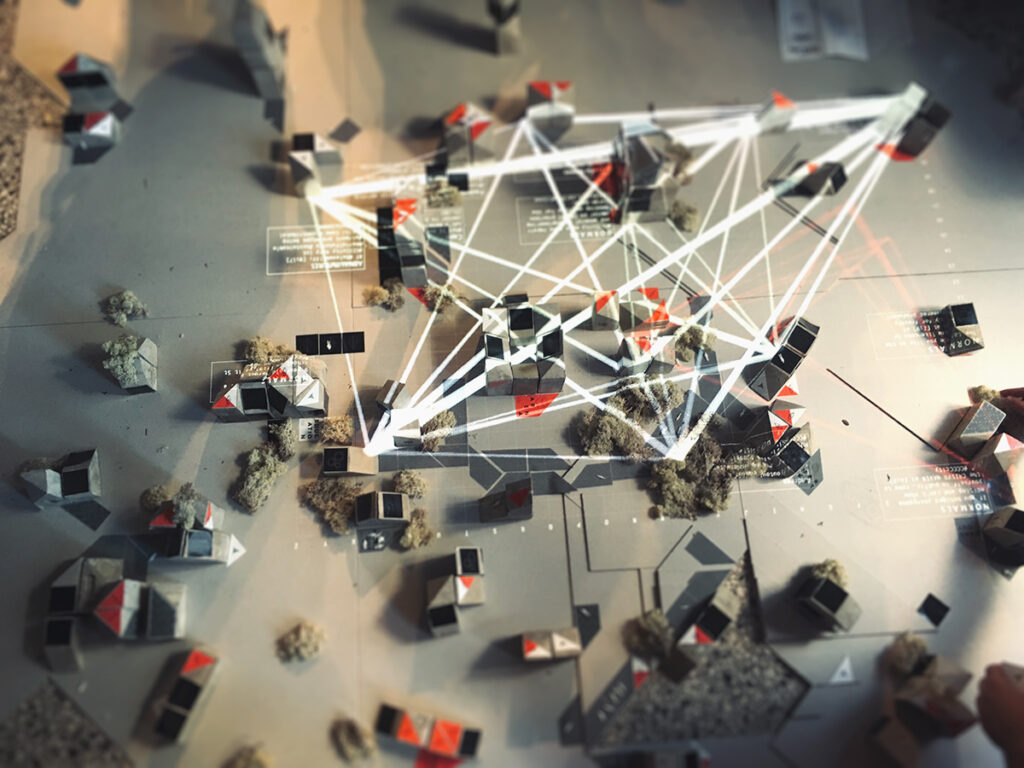
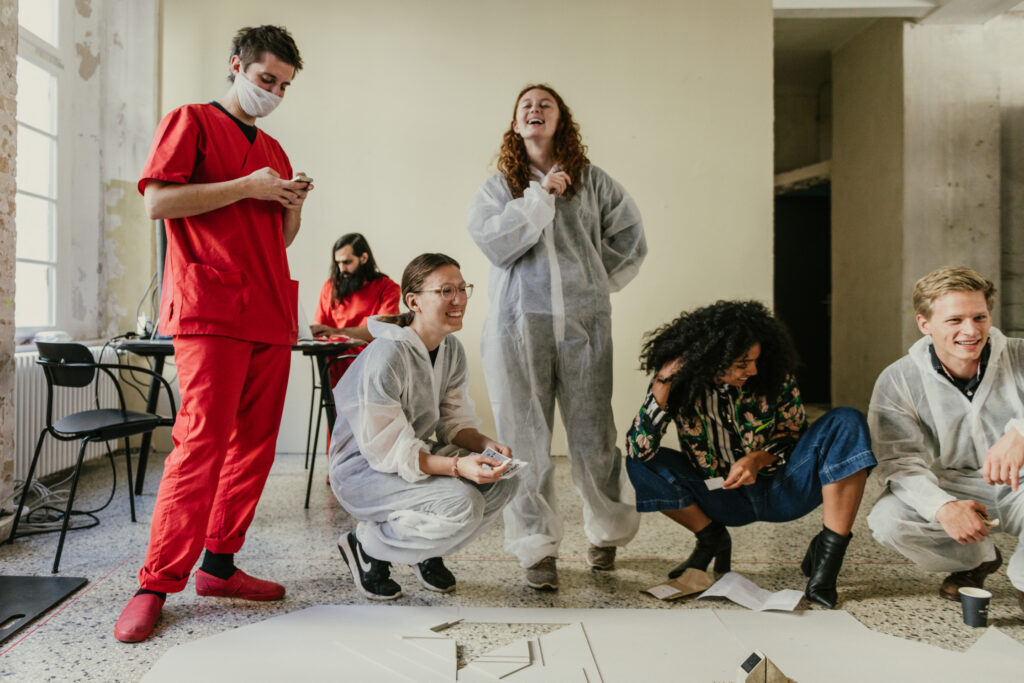
The Fiction in a Press Clipping
AVA’S CCCC.CITY TO REMODEL OUR ENTIRE UNDERSTANDING OF FUTURE LIFE
In a recent public address, AVA’s CSO Emmeline Seventwentyfour officialized her initiative to relocate the company’s main operations hub to the recently acquired island of Socotra. Situated between the horn of Africa and the Arabian peninsula, the island is seen by the company’s Chief Spiritual Officer as “the perfect opportunity to engage in business with emerging markets, while keeping our unique vision of the world”. The project is nothing short of pharaonic. With currently nonexistent infrastructures save for an indigenous city — which the company ensures will be preserved — and a rudimentary airport operating on a weekly basis, “Settling on the island will be a challenge," comments Seventwentyfour, "not only due to its remote location, but also in regard to the high ambitions we have to develop something that goes beyond the usual scope of corporate headquarters. We will be relocating a pool of volunteers to this paradise, and are planning to build the city of the thirtieth century for their families. We want Four Seas to become the single most relevant urban development project and are, as per our human-centric modus operandi, about to run a consultation to foresee and create the city together with its future inhabitants.” The merger of giants Alibaba, Verizon, and Amazon, AVA has seen total shareholder returns skyrocket to unprecedented levels. As its leader says, “it only makes sense that we, as a corporation more powerful than most governments, owners of our own micronation, should give back to the community by imagining the best social system money can buy”.
source: Laghari, Rajesh. Social Economy and Urban Development in the 22nd Century. Business Outsider May 20f8: 108–13. Print.
The Event
Invited to create a participative design intervention for the event The Sooner Now subtitled ‘Urban Utopias’, with the constraint that guests should be able to get involved “from just five minutes to a full day,” we devised CCCC.City — a collaborative creative exploration of the future city. Held in October 2018 in the ‘Friends Space’ of Berlin-based cultural production network Freunde Von Freunden (FvF), the project took the shape of a half-construction-half-role-playing game inviting audience members to collaboratively build new structures and invent their stories as future citizens.
Upon arrival, each guest was given a token to be exchanged against one of 200 unique Citizen Kits, complete with their persona as a new resident of CCCC.City. This comprised a concrete building block, a small human figurine, as well as a combination 'tech' stickers and some fresh nordic moss. In addition, an instruction manual explained the rules of the game, which was split in three phases: the first, during which participants were required to place their building block on a large map, preferably in a way that completes one of the many proposed patterns — a process which often required communication and lobbying among citizens — and append the stickers in their possession. Those who completed a pattern (think hospitals, housing, hubs…) had to then invent a story for their new infrastructure, in a way that integrated the technologies and resources used.
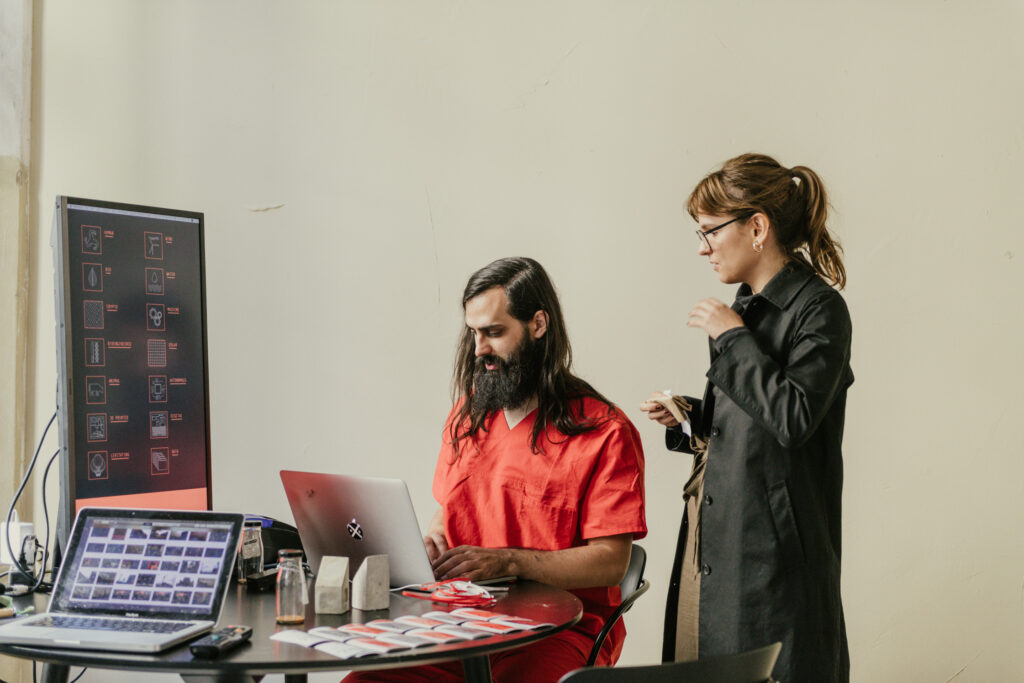
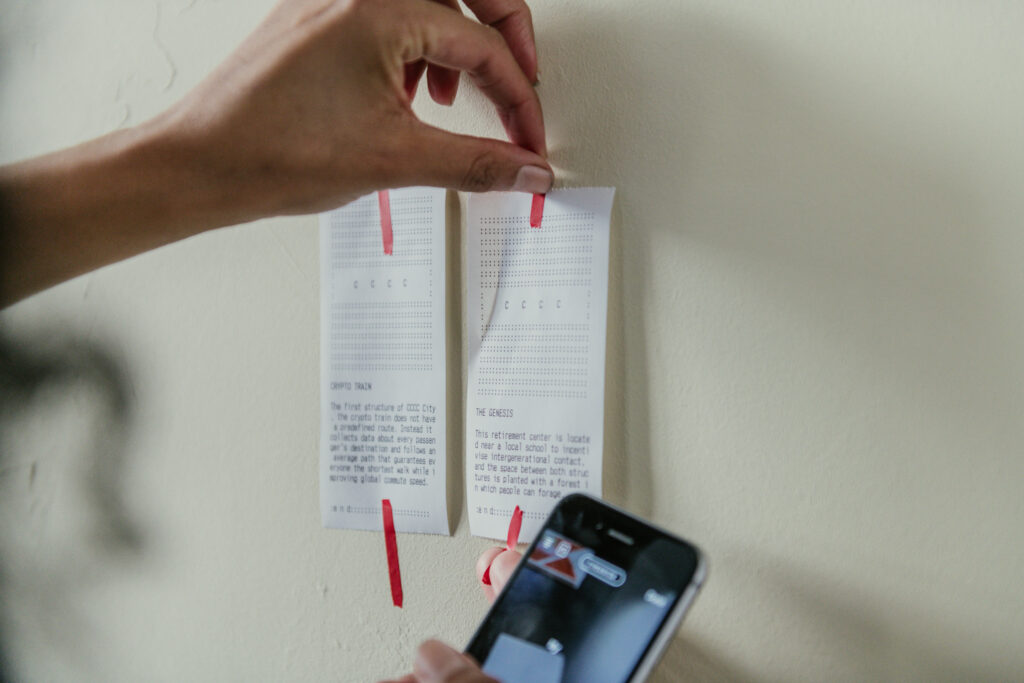
This story would finally be submitted to our control booth where it was fact-checked and validated, granting the project owners the right to name their structure and to tweet about it, using a special hashtag paired with coordinates for the tweet to find its place on the map. It was of course equally possible for participants to ignore the main goal and instead focus on disturbing existing structures so that they may never be completed — different behaviors being triggered by the roles participants were assigned as part of their citizen kit.
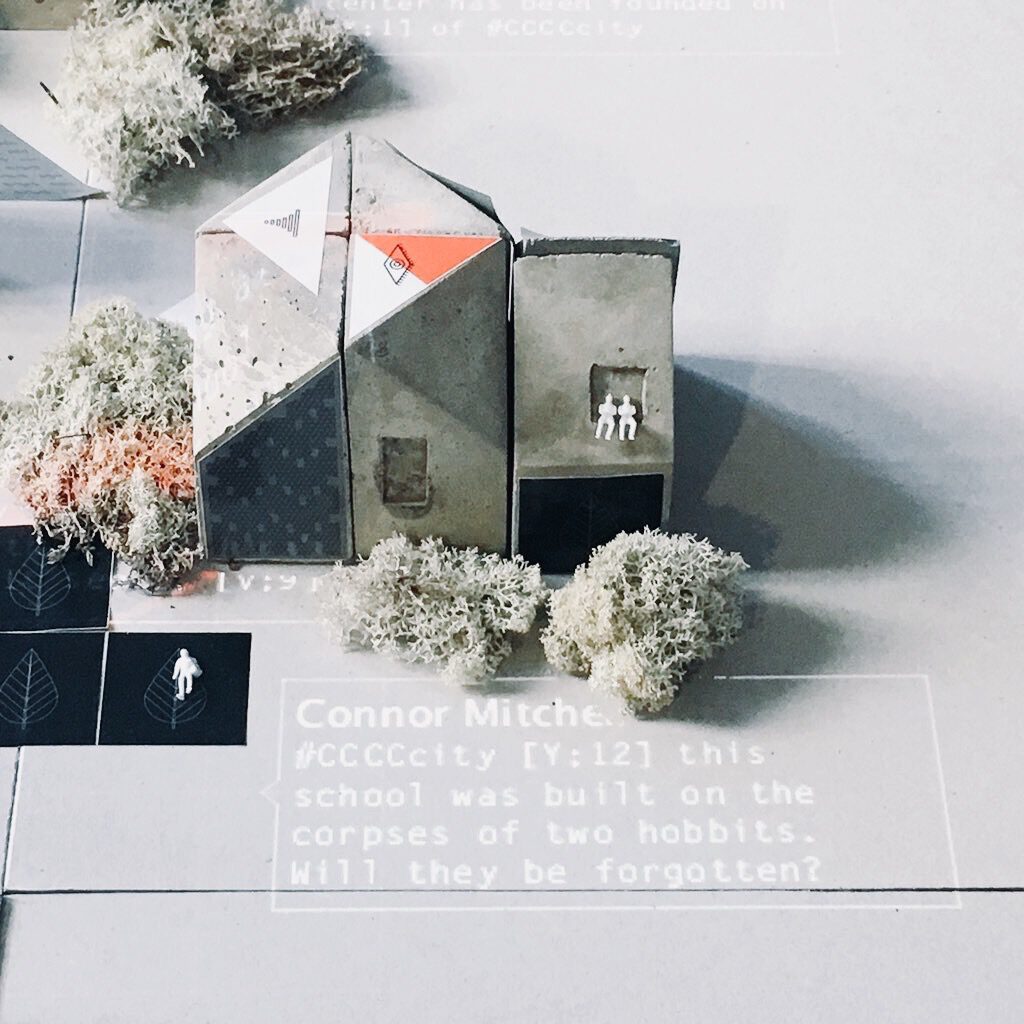
It was only during the closing keynote address that its CSO Emmeline Seventwentyfour made her first appearance. Her inspirational speech remained, however, what should be expected from a Chief Spiritual Officer: inspirational.
Following Emmeline’s intervention, two students from Minerva Schools who had contributed to coordinating the game throughout the day, while keeping tabs on social dynamics among citizens, took the stage to deliver the conclusions of the experiment. Conflicts arose, they signaled, from the seemingly irrepressible need for a majority to develop detrimentally to a minority of scapegoats — in the case of CCCC.City, these were the "neohobbits" whose habitat was destroyed in order to make space for the new "St Trout Grounds" school, and those whose CRISPR project went wrong and who could no longer show themselves in public. Solidarity projects eventually developed in reaction, with safe spaces being managed for both populations, notably the hot-air balloon "CRISPR Haven" and the last floor of health center "Our Lady Of The Shire." Other noteworthy phenomenon: a fairly equal proportion of technology- and tradition-infused projects, suggesting a strong anchoring of CCCC ideals within both past and future.
Finally, CCCC.City’s main architects Otto Wavełski and Rajesh Laghari — better known for their contribution to Mexico City CDRMX urban redevelopment plans — took the stage to present the working method in further detail, along with other examples of projects envisioned during the day. The "Crypto Train," which functions without a predefined route but collects data about each passenger’s ideal journey to calculate a path ensuring both high commute speed and short walks to destination. The "Genesis", a retirement center built near a school to incentivize intergenerational contact. "Dillon," a prescription restaurant where food is served based on what your doctor says is best. "Fish’n’Bits," a digital fish market where customers go virtual fishing and pick-up their catch ready for consumption upon leaving. "WCCCC," the roman-style arena for communal release, built as a response to the city’s inability to deal with human waste despite ambitions of being a zero-waste city. "Cybersuckerpunch," a team of protective cyborgs trained to manage conflicts between the underground club and nearby church. Or "Tower Of Miracles," the first autonomous trade center which randomly prints goods that can be acquired on the blind by gambling cryptocurrency.
Big thanks to Connor, Nicole, Inna, Tessa, & Capri from Minerva Schools for helping us throughout the whole day!
Photo credits (for all the nice pics): Freunde von Freunden
